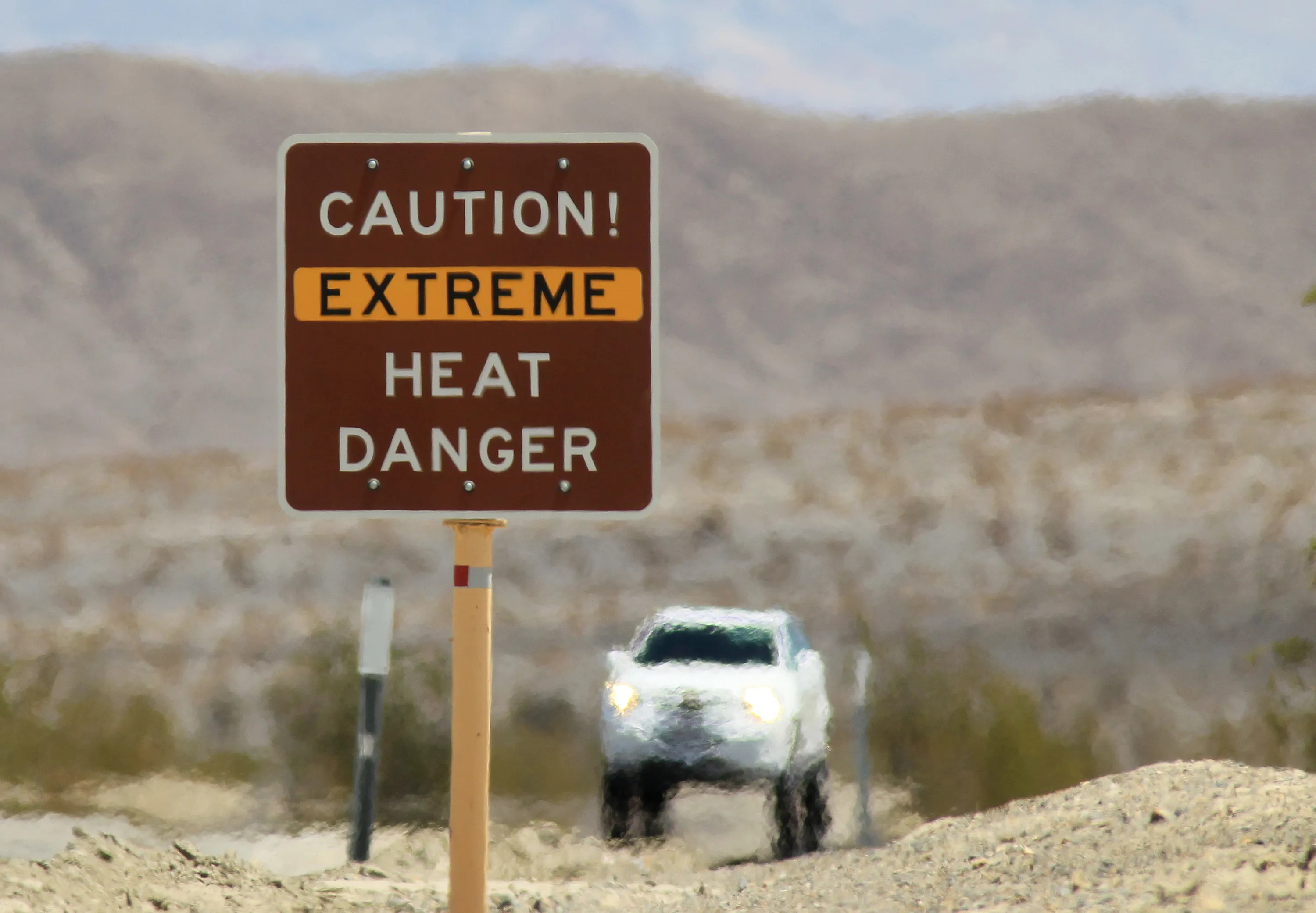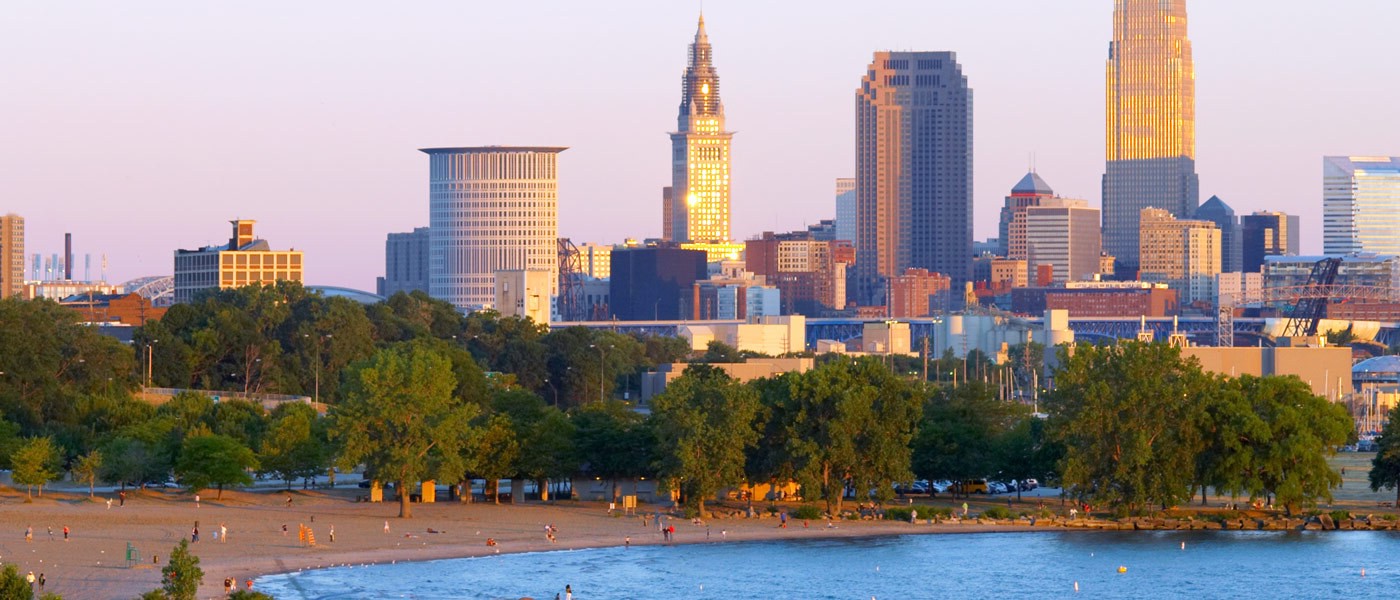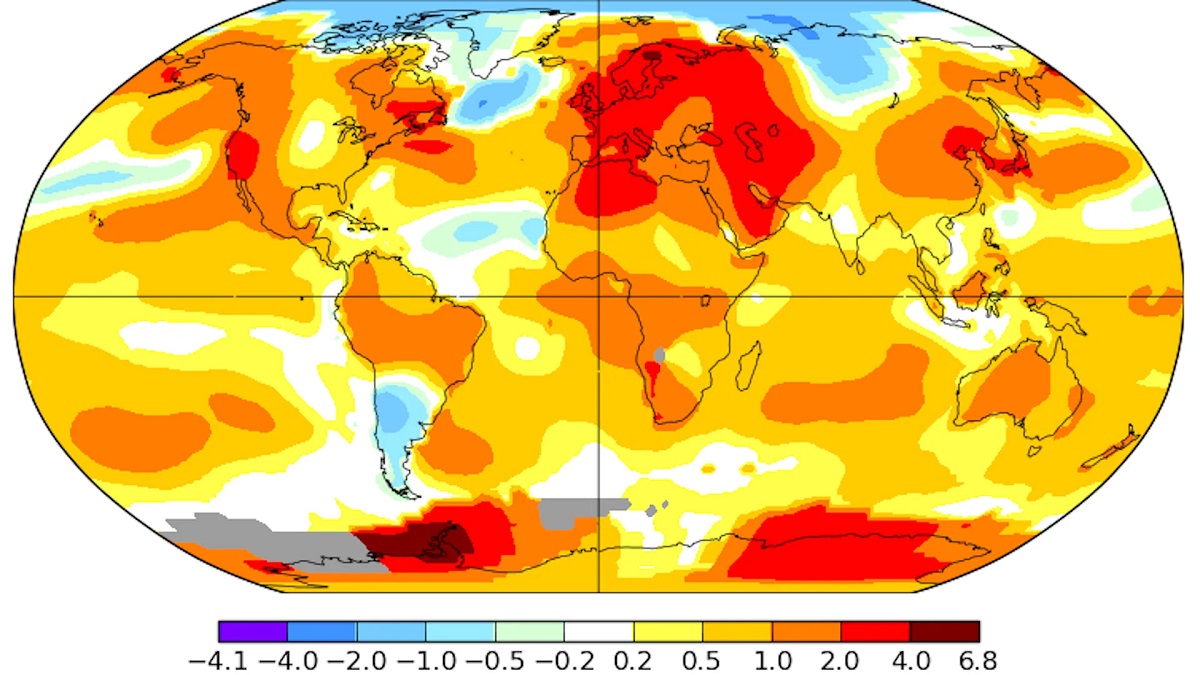Home>Weather and Climate>Portland’s Highest Recorded Temperature


Weather and Climate
Portland’s Highest Recorded Temperature
Published: March 6, 2024
Discover Portland's highest recorded temperature and learn about the city's weather and climate trends. Explore the impact of weather on Portland's environment and daily life.
(Many of the links in this article redirect to a specific reviewed product. Your purchase of these products through affiliate links helps to generate commission for Temperatures.com, at no extra cost. Learn more)
Table of Contents
Introduction
Portland, Oregon, a city known for its lush greenery, vibrant culture, and temperate climate, has experienced its fair share of extreme weather events. While the region is renowned for its mild summers and rainy winters, it has also witnessed record-breaking high temperatures that have left a lasting impact on both the environment and its residents.
In this article, we delve into the intriguing world of Portland's highest recorded temperatures, exploring the historical milestones, the factors contributing to these extreme heat events, and the city's response to such occurrences. By understanding the dynamics of temperature records and their implications, we gain valuable insights into the resilience of this vibrant city in the face of climatic challenges.
Join us on a journey through Portland's climatic history as we uncover the stories behind its most scorching moments and the measures taken to mitigate the effects of extreme heat. Let's embark on an exploration of Portland's highest recorded temperatures, where the convergence of nature and human adaptation unfolds in compelling ways.
Understanding Temperature Records
Temperature records serve as vital indicators of a region's climatic patterns and extremes. In the context of Portland, Oregon, these records provide valuable insights into the city's historical temperature fluctuations and the occurrence of extreme heat events. Understanding temperature records involves delving into the methodologies of data collection, analysis, and the significance of these records in the broader context of climate science.
Portland's temperature records are meticulously documented by meteorological agencies and research institutions, utilizing a network of weather stations strategically positioned across the city. These stations continuously monitor and record temperature data, enabling meteorologists and climatologists to analyze trends, identify anomalies, and establish historical benchmarks for comparison.
The highest recorded temperatures in Portland are not merely isolated data points but rather integral components of a comprehensive dataset that encapsulates the city's climatic history. By examining these records, scientists can discern long-term temperature trends, detect patterns of temperature variability, and assess the frequency and intensity of extreme heat events.
Moreover, understanding temperature records involves recognizing the significance of specific metrics such as the highest daily temperatures, monthly temperature averages, and annual temperature anomalies. These metrics provide a nuanced understanding of Portland's temperature dynamics, shedding light on both short-term fluctuations and long-term climatic shifts.
In the context of climate change, the analysis of temperature records becomes even more crucial. By comparing historical temperature data with contemporary observations, researchers can discern the influence of climate change on the frequency and intensity of extreme heat events in Portland. This analysis contributes to a deeper understanding of the city's vulnerability to rising temperatures and informs strategies for climate resilience and adaptation.
In essence, understanding temperature records entails a multifaceted exploration of Portland's climatic history, encompassing data collection, analysis, and the broader implications for climate science and environmental stewardship. By delving into these records, we gain valuable insights into the intricate interplay between nature's thermal dynamics and the human experience in the vibrant city of Portland.
Factors Contributing to High Temperatures in Portland
Portland's susceptibility to high temperatures is influenced by a confluence of geographical, meteorological, and environmental factors. Understanding these contributing elements provides a comprehensive insight into the dynamics of extreme heat events in the city.
Geographic Location:
Situated in the Pacific Northwest, Portland experiences a unique interplay of geographical features that contribute to high temperatures. The city's proximity to the Pacific Ocean moderates its climate, but during certain weather patterns, inland heat can be funneled into the region, leading to spikes in temperature. Additionally, the surrounding mountain ranges can act as barriers, trapping heat and exacerbating local temperatures.
Urban Heat Island Effect:
As an urban center, Portland is susceptible to the urban heat island effect, where the concentration of buildings, pavement, and human activities leads to elevated temperatures compared to the surrounding rural areas. This phenomenon intensifies during heatwaves, amplifying the impact of high temperatures within the city.
Read more: Portland Monthly Average Temperatures
Weather Patterns and Air Masses:
The movement of air masses and prevailing weather patterns significantly influences Portland's temperature extremes. During periods of high pressure and stagnant atmospheric conditions, warm air masses can settle over the region, leading to prolonged periods of intense heat. Conversely, the absence of cooling maritime air can exacerbate high temperatures, particularly during the summer months.
Climate Change:
The overarching influence of climate change cannot be overlooked when considering the factors contributing to high temperatures in Portland. The gradual warming of the planet has direct implications for regional climates, including an increased likelihood of extreme heat events. Rising greenhouse gas emissions and alterations in atmospheric circulation patterns contribute to the amplification of high temperatures in Portland and the broader Pacific Northwest region.
Vegetation and Land Use:
The presence of vegetation and land use practices play a role in shaping Portland's thermal environment. Urban green spaces and tree cover can mitigate the urban heat island effect, providing pockets of cooling amidst the built environment. Conversely, deforestation and land development can diminish natural cooling mechanisms, exacerbating the impact of high temperatures.
By comprehensively examining these factors, we gain a deeper understanding of the intricate web of influences that contribute to high temperatures in Portland. This multifaceted perspective underscores the complexity of mitigating extreme heat events and underscores the importance of proactive measures to enhance the city's resilience in the face of rising temperatures.
Historical High Temperature Events in Portland
Portland, Oregon, has witnessed several historically significant high temperature events that have left a lasting imprint on the city's climatic narrative. These events serve as pivotal milestones, illuminating the intensity and impact of extreme heat on the region. One such notable occurrence took place in June 2021 when Portland experienced an unprecedented heatwave that shattered previous temperature records. The city endured scorching temperatures, culminating in a staggering high of 116 degrees Fahrenheit, marking the highest temperature ever recorded in Portland's history.
Prior to this milestone, Portland's historical high temperature events included the notorious heatwave of August 1981, during which the city sweltered under a record-setting temperature of 107 degrees Fahrenheit. This event, etched in the annals of Portland's climatic history, underscored the city's vulnerability to extreme heat and its implications for public health, infrastructure, and natural ecosystems.
Furthermore, the summer of 1965 witnessed another significant high temperature event, with Portland experiencing a blistering 107 degrees Fahrenheit, amplifying concerns about heat-related risks and the need for adaptive measures to safeguard the well-being of residents.
These historical high temperature events in Portland serve as poignant reminders of the city's susceptibility to extreme heat and the imperative of proactive strategies to mitigate its impact. They also provide valuable data points for climate scientists and meteorologists, enabling them to discern long-term trends and patterns in Portland's temperature records.
The recurrence of such high temperature events underscores the urgency of addressing climate change and implementing resilience measures to safeguard the city and its inhabitants. By acknowledging and learning from these historical milestones, Portland can fortify its preparedness for future extreme heat events and foster a climate-resilient community.
The historical high temperature events in Portland encapsulate the city's climatic journey, highlighting the intersection of natural phenomena, human adaptation, and the imperative of sustainable practices in the face of escalating temperatures. These events serve as compelling chapters in Portland's climatic narrative, shaping the city's approach to climate resilience and reinforcing the significance of proactive measures in mitigating the impact of extreme heat.
The Impact of High Temperatures on the City
The ramifications of high temperatures extend far beyond mere discomfort, profoundly impacting various facets of life within the city of Portland. From public health to infrastructure and the natural environment, extreme heat events exert a multifaceted influence on the urban landscape and its inhabitants.
Public Health and Well-being
High temperatures pose significant risks to public health, particularly for vulnerable populations such as the elderly, children, and individuals with pre-existing health conditions. Heat-related illnesses, including heat exhaustion and heatstroke, become more prevalent during extreme heat events, placing strain on healthcare facilities and emergency services. Moreover, the exacerbation of air pollution and the proliferation of allergens under high temperatures can exacerbate respiratory ailments, further compromising public health.
Urban Infrastructure
The impact of high temperatures on urban infrastructure is pronounced, with heat stress exerting strain on buildings, roads, and utilities. Prolonged exposure to extreme heat can lead to the deterioration of asphalt, increased energy demands for cooling systems, and potential disruptions to transportation networks. Furthermore, the urban heat island effect intensifies within the city, amplifying the demand for cooling resources and exacerbating energy consumption patterns.
Natural Ecosystems
Portland's natural ecosystems also bear the brunt of high temperatures, with implications for biodiversity, water resources, and ecological balance. Elevated temperatures can disrupt the delicate equilibrium of local flora and fauna, leading to shifts in habitat suitability and species distributions. Additionally, heat stress on water bodies can impact aquatic ecosystems, influencing water quality and the viability of aquatic organisms.
Read more: Historical California Temperature Records
Social and Economic Impacts
The social and economic fabric of the city is not immune to the impact of high temperatures. From decreased productivity in outdoor industries to the strain on social services and community resources, extreme heat events can engender a ripple effect across various sectors. Furthermore, the exacerbation of disparities in access to cooling resources and the heightened risk of heat-related illnesses among marginalized communities underscore the social equity dimensions of extreme heat impacts.
Adaptive Measures and Resilience
In response to the multifaceted impact of high temperatures, Portland has implemented a range of adaptive measures aimed at enhancing resilience and mitigating the effects of extreme heat events. These measures encompass urban greening initiatives, heat emergency response plans, public awareness campaigns, and the promotion of energy-efficient building designs. By fostering a climate-resilient urban landscape and prioritizing public health and well-being, Portland endeavors to confront the challenges posed by high temperatures and cultivate a sustainable, adaptive city for its residents.
The impact of high temperatures on the city of Portland underscores the imperative of proactive strategies to address the multifaceted challenges posed by extreme heat events. By recognizing the diverse implications of high temperatures and implementing resilience measures, Portland endeavors to fortify its urban fabric and safeguard the well-being of its residents in the face of escalating temperatures.
Preparation and Response to Extreme Heat Events
Preparation and response to extreme heat events are integral components of Portland's proactive approach to climate resilience and public safety. As the city grapples with the escalating frequency of high temperature occurrences, robust strategies and coordinated efforts are essential to mitigate the impact on residents, infrastructure, and the natural environment.
Early Warning Systems and Public Outreach
Portland has implemented early warning systems to alert residents about impending heatwaves, enabling proactive measures to be taken. These systems leverage meteorological data and predictive models to anticipate extreme heat events, providing timely notifications to the public and relevant stakeholders. Additionally, public outreach campaigns are conducted to raise awareness about the risks associated with high temperatures and to disseminate guidance on heat safety measures. By empowering the community with knowledge and preparedness resources, Portland aims to enhance the resilience of its residents in the face of extreme heat.
Cooling Centers and Community Support
The establishment of cooling centers across the city serves as a vital resource during heatwaves, offering refuge to individuals who may lack access to air conditioning or adequate cooling facilities. These centers provide a reprieve from the sweltering temperatures, offering a safe environment for residents to seek respite and hydration. Furthermore, community support networks are mobilized to check on vulnerable individuals, including the elderly and those with limited mobility, ensuring that they receive assistance during periods of extreme heat. These initiatives underscore Portland's commitment to fostering a supportive and inclusive community response to high temperatures.
Urban Planning and Green Infrastructure
Urban planning initiatives in Portland prioritize the integration of green infrastructure, including the expansion of urban green spaces, the implementation of heat-resilient landscaping, and the promotion of sustainable building designs. These efforts aim to mitigate the urban heat island effect, enhance natural cooling mechanisms, and foster a more thermally comfortable urban environment. By incorporating green infrastructure into city planning, Portland endeavors to create adaptive urban landscapes that are better equipped to withstand extreme heat events and promote the well-being of its residents.
Collaborative Partnerships and Emergency Protocols
Collaborative partnerships between governmental agencies, non-profit organizations, and community groups play a pivotal role in coordinating emergency response protocols during high temperature events. These partnerships facilitate the dissemination of resources, the provision of medical support, and the implementation of heat emergency plans. Moreover, the integration of heat-specific protocols into existing emergency response frameworks ensures a comprehensive and targeted approach to addressing the challenges posed by extreme heat. Through these collaborative efforts, Portland strives to bolster its capacity to respond effectively to high temperature events and safeguard the welfare of its residents.
In essence, Portland's preparation and response to extreme heat events exemplify a proactive and community-centered approach to climate resilience. By leveraging early warning systems, establishing cooling centers, prioritizing green infrastructure, and fostering collaborative partnerships, the city endeavors to confront the challenges posed by high temperatures and cultivate a resilient urban landscape. These initiatives underscore Portland's commitment to safeguarding the well-being of its residents and adapting to the evolving dynamics of its climatic reality.
Conclusion
In conclusion, the exploration of Portland's highest recorded temperatures unveils a compelling narrative that intertwines the city's climatic history, the impact of extreme heat events, and the proactive measures taken to enhance resilience. From the meticulous understanding of temperature records to the multifaceted factors contributing to high temperatures, Portland's climatic journey reflects the intricate interplay between natural phenomena and human adaptation.
The historical milestones of high temperature events in Portland, including the unprecedented heatwave of June 2021 and the notable occurrences in 1981 and 1965, serve as poignant reminders of the city's vulnerability to extreme heat. These events underscore the urgency of addressing climate change and implementing adaptive measures to mitigate the impact of rising temperatures. Furthermore, the multifaceted impact of high temperatures on public health, urban infrastructure, natural ecosystems, and the social fabric of the city highlights the imperative of proactive strategies to address the challenges posed by extreme heat events.
Portland's preparation and response to extreme heat events exemplify a proactive and community-centered approach to climate resilience. Through early warning systems, cooling centers, urban planning initiatives, and collaborative partnerships, the city endeavors to confront the challenges posed by high temperatures and cultivate a resilient urban landscape. These initiatives underscore Portland's commitment to safeguarding the well-being of its residents and adapting to the evolving dynamics of its climatic reality.
As Portland continues to navigate the complexities of its climatic landscape, the convergence of data-driven insights, community engagement, and sustainable practices remains pivotal in fostering a climate-resilient city. By acknowledging the historical milestones, understanding the multifaceted impact of high temperatures, and embracing proactive measures, Portland charts a course toward a sustainable and adaptive future. The city's journey through extreme heat events serves as a testament to the resilience of its residents and the enduring commitment to safeguarding the well-being of its vibrant community amidst the challenges posed by escalating temperatures.
In essence, the exploration of Portland's highest recorded temperatures unveils a narrative of resilience, adaptation, and community solidarity in the face of climatic challenges. It underscores the city's unwavering commitment to fostering a sustainable and inclusive urban landscape, where the convergence of nature and human ingenuity shapes a vibrant and resilient community.











